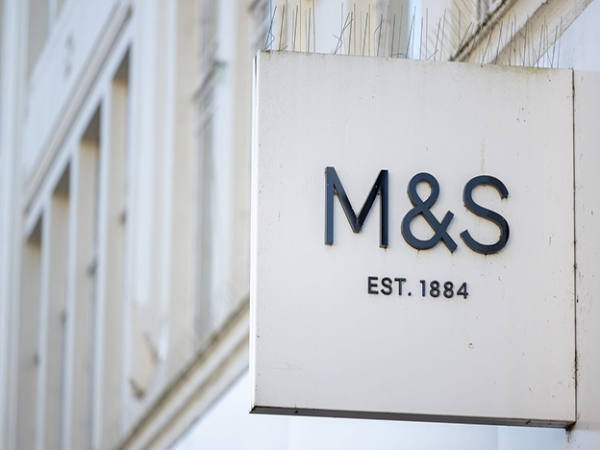The US is the big gun in defence spending. The annual budget is famously larger than that of the next nine nations’ spending (including big budgets in China, India and Russia) combined with a 2022 spending allocation of around $750bn: that is $2,275 for every man, woman and child. In contrast, the UK plans to spend $61bn (at 2021 exchange rates: £43.5bn in local currency) or $925 per person and the global average is just $275. It is unsurprising, therefore, that the world’s largest defence contractors and suppliers are to be found in the US.
US spending in this area is forecast to rise steadily but as a percentage of GDP, the defence budget is today at one of its lowest levels in the last 60 years. Republican legislators would happily see spending back above 4 per cent but, practically, that is likely to prove unaffordable.
US defence spending – absolute and as %age of GDP
Source: The World Bank
Forecasts for US defence spending – $bn
Source: Statista | P = provisional F = Forecast
Does big mean beautiful? Not necessarily, and despite almost bottomless budget allocations, currently not all players are doing that well and many of the larger stocks are seen as offering only limited value for investors. This has been a steady and reliable sector for investors historically with a total shareholder return (TSR) over the last 15 years of >14 per cent per annum: the Dow Jones has averaged 4.9 per cent and the S&P 10 per cent.
Is this sector just a proxy for tracking defence spending? Not really. In the period after the Iraq War de-escalated and the Obama administration presided over a fairly steep decline in allocations, the US defence sector overall rose in value. Between 2011 and 2020, the amount spent on defence barely changed in nominal terms ($752bn to $778bn) but dropped as a share of gross domestic product (GDP) from 4.8 to 3.7 per cent . However, in that time the overall index of defence stocks rose more than four-fold. This was when the sector experienced its major rerating, with price/earnings (PE) ratios running up from low single digit levels peaking at above today's heights.
A different view
In the UK and Europe the start of hostilities in Ukraine caused something of a volte face on investors’ views of defence stocks. Long seen there as a pariah sector (along with the likes of tobacco), there was never any equivalent caution for defence stocks in the US. While the sector does trade on a small discount to the Dow Jones Industrial Average and S&P 500 indices (PE ratios in the mid teens rather than the high teens to low 20s), this discount reflects the steady, sometimes plodding, yet dependable nature of the sector’s earnings rather than any kind of judgement call. That said, the sector did nonetheless jump in late February on the basis that the world would most likely need to come shopping in the US, given many nations (such as Germany) had allowed their active defence industries run into decline. The best and most advanced equipment typically comes out of US businesses.
The main defence stocks
Here we look at the main six stocks that make up the S&P Aerospace & Defense (sic) Index. While some of the larger US defence plays are more household names such as Boeing (US:BA) or Lockheed Martin (US:LMT), others are less well-known such as Raytheon Technologies (US:RTX), Huntington Ingalls (US:HII) or Northrop Grumman (US:NOC) (perhaps most famous for building the Apollo lunar module) while certain names in the list of top 10 recipients of Department of Defense (sic) spending might be a surprise. Mostly related to Covid-19 and related vaccines, Pfizer (US:PFE), Moderna (US:MRNA), Humana (US:HUM) (which, for example, partners with the DoD to administer part of the TRICARE health program for active military, retirees and their families) and Regeneron (US:REGN) (all big pharma businesses) were paid over $30bn in aggregate in 2021. These latter stocks could be a tangential way to play the defence spending cycle.
As with the UK large-cap stocks we reviewed in our 2nd article in this series, not all of the key defence businesses are pure plays.
The most obvious composite stock is Boeing, the near $100bn market value business and number two in terms of DoD allocations receiving over $22bn in 2021. Boeing has three operating arms: Civil aircraft, Defence/Space/Security and Global Services for aircraft, split very roughly 40/40/20 in revenue terms: overall defence (ie excluding space) likely runs out at 40-45 per cent of sales. While the defence business looks sound, the civil side has been a major millstone, and not only because of Covid hitting new airline orders. Boeing’s problems have largely been due to the operational problems and consequent scandal and fines over problems with the 737 Max. There have also been problems with the 787 Dreamliner leading to the FAA demanding a ‘systemic fix’ that will cost Boeing at least $2bn and delay shipments; the problems with 737M will likely have cost over $20bn all told. The end of 747 production this October (civil airline sales ended in 2017) is likely to further the market share losses to Airbus (FR:AIR). Boeing’s reputation is shot to pieces and while the peer group has shown an average TSR of around 70 per cent in the past five years, holding Boeing would have lost you 25 per cent plus the dividend has been stopped as losses are expected again in 2022.
Is this a buying opportunity? Things are still risky here despite rising global defence spending with consensus estimates still falling and now standing more than 25 per cent lower than in January. A bullish observer might look at what was expected before the various problems started to arise in 2019 and assess that as the comeback potential: in mid-2019 EPS estimates for 2024 were around 35¢ per share but today are just 7½¢. But aircraft makers' reputations do not readily heal – look at the harm done to McDonnell Douglas by the DC10 – and Airbus (even with the A380 largely a failure) is stirring up the market. If anyone believes that Boeing can restore even halfway back to those 2019 expectations, the stock would be cheap on a PE of 10x but that’s a big if. The shares look to have bottomed out in June and could rally to $190-$200 (now ~$170), but this means that the best may already be behind us. For the shares to go further, the rot in the earnings needs to stop.
The largest player in this sector with a market value of around $115bn is Lockheed Martin (US:LMT), which is more defence-oriented, but again is not a pure defence play with 20-25 per cent of revenues coming from space, civil aircraft and an array of other businesses including green energy. While Boeing is an aircraft manufacturer, Lockheed is much more the traditional image of an arms business. While it does make aircraft, it also sells a panoply of offensive weaponry: tanks, missiles, seacraft and advanced modern warfare electronics.
While the share price spiked on the start of Ukraine hostilities, it has since drifted back and a month ago the board lowered 2022 profit guidance by 19 per cent, mainly due to delays on sales of the F35 jet fighter. Federal funding delays in some key areas (unexpected in the current climate) and covid disruption to supply chains were to blame. Sales have been growing steadily (albeit sometimes very slowly) for 19 of the last 20 years so a dip in 2022 might come as a surprise but it appears temporary. Yet the consensus view is that the shares are fully valued, at least until the board can deliver confidence that a decent rate of revenue growth will be made from 2023 onwards.
Raytheon Technologies (US:RTX), as it stands today, has only existed since 2020 following the merger of United Technologies (a conglomerate with a small defence arm) and Raytheon Co (a major missiles, radar and electronics business). The group builds aircraft and jet engines (Pratt & Whitney) along with a vast array of missile and missile defence systems. The Ukraine war has been a drag for RTX as it has a sizable involvement with Russia and this has recently caused management to guide profit expectations down. This has led to the shares trading, unusually for the sector, below their 23 February 2022 levels. Offsetting this, civil aviation is bouncing back well but overall, the shares look more expensive than the peer group on a year 1 PE above 20 times.
Northrop Grumman (US:NOC) – largely an aviation (including the B2 stealth bomber), avionics (fighter radar systems) and space business (major involvement in the James Webb Telescope) – that has had a stronger trading record than many of its peers. The resurgence of investment in space has been an important factor and is helping to largely offset the sector-wide labour and materials shortages that have hit many defence stocks in 2022. Another advantage is that space has substantial and faster growing investment from private companies, such as SpaceX and Blue Origin, making it less reliant on slow growing government spending. So this is probably now more of a play on continuing space investment than defence and that almost certainly makes it more interesting, but also more risky. Analysts think that the price is well up with events, but we would certainly look to this one again if the shares fall away.
General Dynamics (US:GD) – this is a business with a background in aircraft manufacture (it owns private business jet maker Gulfstream), shipbuilding and combat vehicles that has bolted on missile and other combat and combat IT systems. The latter now accounts for over one third of revenues. GD has struggled for growth with profits essentially flat since 2016 and EPS growth being largely driven by share buy backs. This has led to long-term under-performance in the past five years. The shares may look expensive on a PE of close to 20 times, but the sizable bias towards technology would account for this. The stock did show some value a month or so ago, but has since rallied more than 12 percent. An interesting profile and what value there was has largely dried up, but again this is worth another look in any share price weakness.
Finally, Huntington Ingalls (US:HII) – a spin off from Northrop Grumman, this is a military shipbuilder that has, unlike its peers, not made a meaningful TSR in the past five years – only 3 per cent per annum and that includes a 2 per cent yield. This has, perhaps, the narrowest exposure of all the stocks we review here but its market segment globally is forecast to grow much more quickly than defence spending overall. However, in the US there is uncertainty about whether the DoD is going to maintain its long held model of ‘355 manned warships’: it could be cut back in favour smaller, unmanned vessels (similar to the great use of drones in military aviation). This could threaten maintenance revenues as well as new builds. There is a lot of debate about whether the age of the warship is over and large vessels have little to do in modern warfare: they are expensive and, as Russia discovered with its cruiser Moskva recently, can be wiped out in an instant. Until the new format of naval warfare becomes apparent, this could be a stock set for long-term decline.
Despite a ‘saloon bar’ view that defence stocks must be a safe haven in today’s less stable environment, it's clear this is not generally the opinion of investment professionals in the US. Perhaps better value can be found closer to home.
<Boxout>
Read parts 1 and 2 of our three part defence analysis:
Are defence stocks tough enough?
The best defence begins at home
<boxout>












